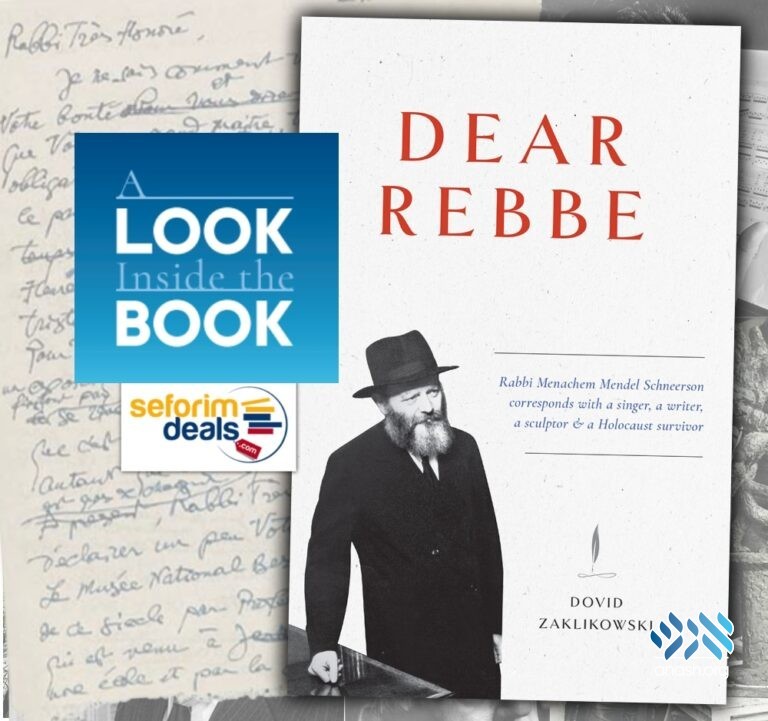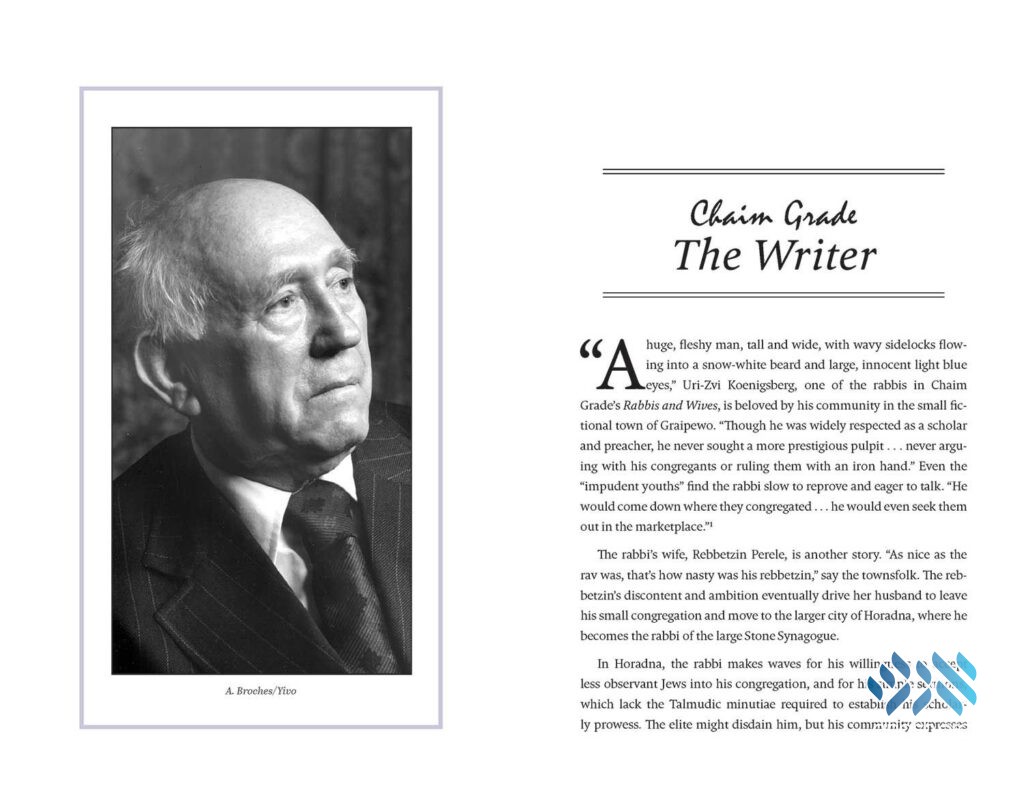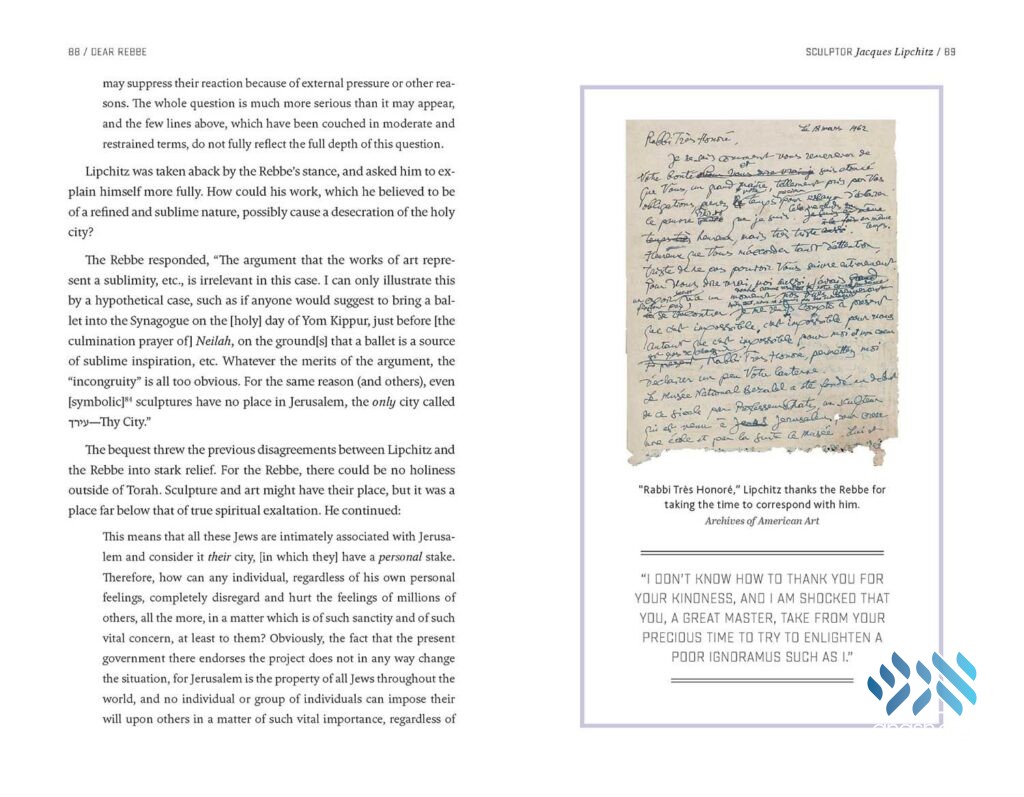A Look Inside the Book: Many books have been written about the Rebbe, but Dear Rebbe, by author Dovid Zaklikowski, gives a fresh angle, showing us the other side of the Rebbe’s correspondence. A new edition features 100+ more pages and color photographs.
A Look Inside the Book is an Anash.org feature that takes a look at what’s new on the shelves of Seforim stores, and reviews recently printed seforim and books. The feature is sponsored by SeforimDeals.com
By Shmuel Super
Dear Rebbe
Dovid Zaklikowski
Hasidic Archives, 5782 (revised edition)
383 pages
Introduction
Many books have been written about the Rebbe in recent years, from a variety of angles. Some attempt to give us a picture of the Rebbe through the story of his life, others through exploring his far-reaching impact, and others through analyzing his beliefs and opinions on various topics.
Dear Rebbe, by Dovid Zaklikowski, is also a book about the Rebbe, but from a fresh angle. This is a book about the Rebbe’s interactions with four famous individuals from different fields of secular endeavor, and it teaches us about how the Rebbe interacted with individuals and impacted their lives.
We usually only see the Rebbe’s end of the correspondence, but Dear Rebbe shows us the other side as well, giving context to the relationship and allowing us to see the impact that the Rebbe had on those he interacted with.
Four people from different fields are profiled in this book: sculptor Jacques Lipchitz, singer Jan Peerce, businessman David Chase, and writer Chaim Grade. But there is a common theme that unites all four of them—they were all born into frum homes, and drifted away from observance, to varying degrees, during the tumultuous times of their youth. Dear Rebbe is the skillfully related story of how the Rebbe worked to draw these people back to Torah and mitzvos with a combination of firm principles, sensitivity, persistence, and candor.
Chapter 1
Zaklikowski’s prologue to Dear Rebbe highlights the importance the Rebbe placed on Jewish pride, a recurring theme in the interactions recounted in this book. Written on a popular level, the author combines Torah sources, psychology, and American Jewish history to paint a picture of the Rebbe’s advocacy of proud Jewish observance and the impact it had on American Jewish life.
We then meet the first figure profiled, Jacques Lipchitz. Despite having drifted away from observance, Lipchitz remained a strong believer in Hashem, and his connection with the Rebbe began when he was severely ill and his wife went to the Rebbe to ask for a berachah.
After recovering, Lipchitz met with the Rebbe. The Rebbe asked him to put on tefillin and daven every day, and Lipchitz accepted, doing so every day for the rest of his life. Thus began a longstanding close relationship between the artist and the Rebbe.
While the relationship was always warm and close, Lipchitz’s work as a sculptor was a recurring point of disagreement between him and the Rebbe, due to the halachic problems involved in the full depiction of certain forms. Lipchitz considered his art as a form of spiritual expression, and therefore holy and sublime. The Rebbe, however, insisted that holiness is defined only by Torah and halachah, and all creation of art must be in full accordance with these standards.
The ongoing exchange between the Rebbe and Lipchitz is fascinating. The Rebbe was firm on matters of halachah and persistent in his efforts to convince Lipchitz, yet was able to argue for his position without negatively affecting their relationship.
In this chapter, we learn about the Rebbe’s deep concern for the holiness of Yerushalayim. The Rebbe wrote long and detailed letters to Lipchitz in an attempt to convince him not to participate in a planned sculpture park in Yerushalayim, and not to donate his sculptures to a museum in the ir hakodesh.
The Rebbe saw these plans as part of an ongoing onslaught against the holy nature and atmosphere of Yerushalayim; an attempt to secularize the holy city. The Rebbe worked hard to dissuade Lipchitz from taking part in this, in addition to his efforts to scuttle the plans through other channels.
From his end, Lipchitz was also open and candid and refused to accept the Rebbe’s position. Once the Rebbe saw that the continued debate was heading nowhere, he summarized his opinion one last time and wrote that he will no longer argue the issue. The Rebbe explained that his general policy in relationships is to seek areas of agreement, so he will drop the unproductive argument.
As a result of his gratitude and respect towards the Rebbe, Lipchitz devoted much time and effort to assisting the Rebbe’s shluchim. He attended and spoke at a number of Chasidic art exhibitions raising money for shluchim, and after his death left his property in Italy to Chabad. Chabad conducted Lipchitz’s funeral in Eretz Yisrael, and the Rebbe arranged for someone to say kadish and learn Mishnayos for him.
Chapter 2
Next, we meet singer Jan Peerce. Peerce had also drifted from observance in his youth and became a world famous opera singer. Yet, he was very sad that he didn’t succeed to raise his children more Jewishly and heartbroken when his son married a non-Jew. After encountering a shliach of the Rebbe, Peerce had a yechidus with the Rebbe, but was upset when the Rebbe made clear to him that his grandchildren were not Jewish.
The relationship was rekindled when Peerce fell ill and the Rebbe gave him a berachah for a recovery. After his recovery, Peerce began performing at Chassidic music events for shluchim and gradually grew closer to Yiddishkeit, putting on tefillin and davening every day, and eating kosher food.
Shabbos observance, however, was particularly difficult for Peerce because it was the main day for performances. After another health episode, the Rebbe wrote to encourage him to keep Shabbos and serve as a positive example for others. But Peerce’s wife, who by this point had already begun observing Shabbos herself, read the letter first and wrote back to the Rebbe arguing that her husband wouldn’t be able to observe Shabbos, it was simply too much to ask of him.
The Rebbe responded to Mrs. Peerce at length, explaining the benefit Shabbos observance would bring and his confidence that her husband would be able to keep it. But she didn’t show Jan the letters, and the Rebbe didn’t mention it to him directly again.
Eventually, Peerce noticed the Rebbe ignored a report from him about a concert on Motzei Shabbos, and realized it was because the starting time was during Shabbos. From then on he stopped performing on Shabbos and around this time, in his later years, became more and more observant.
Chapter 3
Of all the individuals profiled in Dear Rebbe, the best known within Lubavitch is certainly businessman and philanthropist David Chase. Chase is known for the warm conversations he had with the Rebbe at public events, where he expressed his sincere love for the Rebbe and often brought a smile to the Rebbe’s face.
But our book’s chapter about Chase provides readers with a broader and deeper perspective of this special relationship with the Rebbe.
A Holocaust survivor who settled in New Jersey, David Chase became a successful businessman and got involved with the local Lubavitcher Yeshivah in Newark, and played a key role in its move to a spacious campus in Morristown.
Mitzvah observance was initially a challenge for Chase, and when his shliach Rabbi Moshe Herson suggested he begin putting on tefillin, he declined. Rabbi Herson reported this to the Rebbe, and a month later Chase received a now-famous letter from the Rebbe asking him for a birthday gift—to put on tefillin every day.
Here we discover Chase’s emotional response to the Rebbe’s unusual request. Deeply moved, he informed the Rebbe he had begun putting on tefillin the very next day. Then he turned the tables, and asked the Rebbe to give him a birthday gift—three pairs of tefillin for him to use at his various homes.
This chapter also relates the stories of Chase’s involvement in work on behalf of the Jews in Poland, the story that the Rebbe told in a public sichah about Chase’s non-Jewish yacht captain who was influenced by his boss’s devotion to davening, and the groundbreaking of 770.
Chapter 4
The final chapter of the book tells its least known story—the Rebbe’s relationship with Yiddish writer Chaim Grade. Grade attended Novardoker mussar Yeshivos in his youth, and studied privately with the Chazon Ish, with whom he had a very close relationship. But his attraction to secular literature led to him being thrown out of Yeshivah and drifting away from strict observance.
Over his entire life, Grade felt torn between his frum roots and his secular endeavors. This inner torment is reflected in his books, and also over the course of his relationship with the Rebbe.
The author tells us that the complete story of Grade’s relationship with the Rebbe is still unknown, and parts of their correspondence are still missing. We know that Grade was friends with Israeli President Zalman Shazar, and that his relationship with the Rebbe began after he was impressed and affected by a Yud Tes Kislev farbrengen in Kfar Chabad that Shazar took him to.
A fascinating episode concerns Shazar’s first visit to the U.S. as president of Israel. Shazar was under intense pressure from Israeli politicians and journalists not to pay the Rebbe a visit. These people claimed that such a visit would be disrespectful to the office of the presidency, and the Rebbe should be visiting Shazar instead.
This affair became international news, and Shazar was torn and unsure about what to do. Grade later described in a letter how Shazar confided in him, and asked for his opinion. Grade told Shazar that if he would go to visit the Rebbe there would be external turmoil, but it would quickly dissipate. But if he didn’t visit the Rebbe, he would suffer internal turmoil that would never dissipate.
Grade’s advice convinced Shazar to make the visit, and the Rebbe later wrote Grade a letter thanking him for the role he played.
The Rebbe encouraged Grade to use his writing to inspire people in Yiddishkeit, and as a result of Grade’s relationship with the Rebbe and Lubavitcher Chassidim, he began putting on tefillin and davening again.
This revised edition of Dear Rebbe includes newly discovered information about Grade’s relationship with the Rebbe. A piece from Grade’s wife’s unpublished biography of him describes his encounter with the Frierdiker Rebbe in Vilna and the deep impression this left on him.
Also new in this edition is a letter the Rebbe wrote to Grade, addressing Grade’s depression in his old age. The Rebbe wrote about the importance of serving Hashem with joy, and enclosed a copy of a letter he had once written to another Jewish writer, Kalman Segal, who had also been struggling with depression.
In this letter, the Rebbe encouraged Segal—and now Grade—to write works focusing on the good things in life, instilling in readers courage, happiness, and a belief that the positive forces in the world will ultimately triumph.
Conclusion
Dear Rebbe’s uniqueness lies in Zaklikowski’s ability to combine the engaging writing style of a storyteller with the rigorous research and integrity of an academic. The copious endnotes source every detail, and attest to the meticulous research conducted, drawing from books, newspapers, unpublished archives, and personal interviews.
This revised edition adds some new information, as noted earlier, as well as many new color photographs spread throughout the book.
The primary target audience of this book is people from a secular background who are interested in learning more about the Rebbe and his approach to Yiddishkeit, and it makes for an ideal gift for mekuravim.
At the same time, frum readers will also enjoy the opportunity to learn from the way the Rebbe interacted with people from such different worlds, drawing them closer to Torah with both sensitivity and determination.
A new, revised edition of Dear Rebbe can be purchased here.
A Look Inside the Book is sponsored by SeforimDeals.com. Contents of the article are prepared by the author.
For previous articles in the series, click here.






Discussion
In keeping in line with the Rabbonim's policies for websites, we do not allow comments. However, our Rabbonim have approved of including input on articles of substance (Torah, history, memories etc.)
We appreciate your feedback. If you have any additional information to contribute to this article, it will be added below.